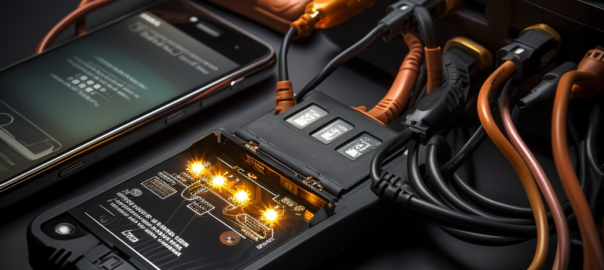Advancements in technology are often touted for their transformative impact on society, but nowhere is this more evident than in the realm of healthcare. While much attention is given to groundbreaking treatments or revolutionary diagnostic tools, an often overlooked yet critical component is the humble battery powering these innovations. Without reliable energy sources, many life-saving devices would simply cease to function.
Medical batteries have come a long way since their rudimentary origins. In the early 20th century, the focus was primarily on functionality, often at the expense of size and longevity. Today, we see a landscape dominated by compact, highly efficient, and smart batteries that not only power devices but interact with them to optimize performance.
This article aims to shed light on the evolution, current status, and future prospects of medical batteries. Through a detailed exploration of technological advancements, applications, and challenges, we’ll navigate the complex terrain of this essential healthcare component.
Understanding the intricacies of medical batteries is not just for the engineers or medical professionals but for anyone interested in the future of healthcare. With the increasing adoption of medical technology in home settings and remote areas, it’s a subject matter that is relevant to us all.
Contents
The Past and Present of Medical Batteries
Early Use-Cases and Limitations
Medical batteries are far from a modern invention; their roots can be traced back to the early 19th century. Initially, their main application was in electrotherapy for pain relief. However, these early batteries were bulky, heavy, and inefficient. It wasn’t uncommon for them to drain quickly, leading to unpredictable performance in medical procedures. Battery leakage and corrosion were also significant concerns, as these could lead to device failure or, even worse, patient harm.
Current Technology: Lithium-ion, Alkaline, and More
Fast forward to today, and the landscape is dramatically different. Lithium-ion batteries have become the industry standard, renowned for their high energy density, rechargeability, and longevity. Alkaline batteries still have their place, primarily in devices that require a stable current over a longer period but don’t demand high energy output. Silver-zinc batteries, although less common, offer a compromise between high energy density and rechargeability, making them ideal for certain specialized applications.
Lithium-ion batteries have been a game-changer for medical devices, allowing for more complex functionalities and longer device lifetimes. For instance, a typical lithium-ion battery can power a modern pacemaker for about 6 to 15 years, depending on usage, compared to just a few years for older battery technologies.
Moreover, the industry is adopting smart battery technology, where batteries are not merely a power source but an integrated component that can communicate with the device for better performance. These smart batteries can report their status, predict end-of-life scenarios, and even optimize power usage based on the device’s needs.
To grasp the importance of these advancements, consider this: According to a study by Grand View Research, the global medical battery market size was valued at $2.9 billion in 2019 and is expected to grow at a compound annual growth rate (CAGR) of 10.5% from 2020 to 2027. This growth isn’t merely a result of increased demand for medical devices but also a testament to the innovation happening in the battery sector itself.

Innovations in Medical Battery Technology
Smart Batteries
We’ve stepped into an era where batteries are not just power stores; they’re becoming smarter. Smart batteries come equipped with a microprocessor that communicates directly with the device they power, allowing for real-time monitoring of battery status. This goes beyond just indicating when a battery is low. Advanced algorithms predict battery lifespan based on usage patterns and environmental conditions, offering healthcare professionals crucial insights that can affect patient treatment.
This is particularly valuable for devices like insulin pumps, where sudden battery failure can result in life-threatening situations. Predictive analytics in smart batteries can warn users well in advance, giving ample time for replacements or other corrective actions.
Wireless Charging Capabilities
As medical technology becomes increasingly portable and implantable, the ability to charge devices without intrusive methods is a massive boon. Wireless charging for medical batteries is a field gaining considerable traction. It offers the convenience of charging through inductive coupling or even more advanced methods like ultrasound, alleviating the need for cumbersome cables or charging docks.
According to Markets and Markets, the global wireless health market is expected to reach $250.6 billion by 2025. Wireless charging plays an essential role in this market, freeing both patients and healthcare providers from the constraints of plug-in charging and thereby enhancing mobility and ease of use.
Miniaturization
Size matters, especially when it comes to implantable devices. The trend towards miniaturization in medical batteries has opened doors for devices that were once considered science fiction. The development of increasingly compact yet powerful batteries means that implantable medical devices can be more comfortable and less invasive than ever before.
A compelling example is the Micra Transcatheter Pacing System, the world’s smallest pacemaker. It’s about the size of a large vitamin capsule, thanks in part to advancements in battery technology. With smaller and more efficient batteries, healthcare providers have greater flexibility in device implantation, leading to less invasive procedures and faster patient recovery.
Applications of Advanced Medical Batteries
Pacemakers
Pacemakers have been a cornerstone in the medical device world for decades, but they’ve evolved substantially thanks to advancements in battery technology. A modern pacemaker can last up to 15 years, largely due to lithium-ion batteries. Their longevity and reliability are paramount for patients who rely on these devices to regulate their heartbeats. Given that roughly 200,000 pacemakers are implanted in the United States each year, according to the American Heart Association, the need for reliable and long-lasting batteries cannot be overstated.
Insulin Pumps
Diabetes management has been revolutionized by the advent of insulin pumps, allowing for more precise and consistent insulin delivery. Advanced batteries facilitate the pump’s complex algorithms and continuous operation. Smart batteries, capable of predictive analytics, add an extra layer of security by notifying users of impending battery depletion. This is particularly crucial as a sudden loss of power can lead to life-threatening scenarios.
Robotic Surgery
The rise of robotic surgery platforms like the da Vinci Surgical System necessitates batteries with high energy density and quick recharge times. As these robotic systems are becoming increasingly autonomous, the role of the battery extends beyond mere energy storage. Smart battery systems in these platforms can manage energy flow more efficiently, ensuring that the robotic arms and surgical tools function optimally during intricate procedures.
Portable Diagnostic Equipment
Portable X-ray machines, ultrasound devices, and other diagnostic equipment have become indispensable in modern healthcare, especially in rural or remote settings. High-capacity, rechargeable batteries make it possible to take these vital diagnostic tools out of the hospital setting, bringing healthcare directly to patients who might otherwise lack access.
Regulatory and Safety Concerns
FDA Guidelines
As medical devices increasingly integrate advanced batteries, regulatory bodies have responded by enhancing guidelines to ensure patient safety. In the United States, the Food and Drug Administration (FDA) sets the standard for medical device safety, including the batteries that power them. Under FDA regulations, batteries must undergo rigorous testing for biocompatibility, stability, and risk of failure before they can be integrated into a medical device. This ensures that the battery not only performs effectively but is also safe for long-term human use.
Importance of Quality Control
Quality control is paramount when it comes to medical batteries. Given their critical role in life-sustaining devices, there’s no room for error. Manufacturers must adhere to stringent quality control processes that comply with international standards like ISO 13485 for medical devices. This involves everything from the sourcing of materials to manufacturing and final testing. Ensuring each battery is reliable and performs as expected under varying conditions is not optional; it’s a matter of life and death.
Recalls and Safety Concerns
While advancements in technology have made batteries more reliable than ever, recalls still occur. For instance, St. Jude Medical recalled some of its implantable cardioverter defibrillators (ICDs) in 2016 due to battery problems that led to two deaths. Incidents like these serve as cautionary tales, emphasizing the need for constant vigilance in quality control and post-market surveillance.
Counterfeit Batteries
Another challenge in maintaining safety standards comes from the rise of counterfeit batteries. These low-quality batteries can pose significant risks when used in medical devices, including reduced device performance and even possible explosions. Authorities like the FDA often issue advisories and conduct operations to seize counterfeit products, but the problem persists.

Environmental Impact
Disposable vs. Rechargeable Batteries
The increased reliance on medical batteries has inevitably raised concerns about their environmental impact. While disposable batteries are convenient, they contribute to electronic waste and can leak harmful chemicals into the environment. Rechargeable batteries like lithium-ion units offer a more sustainable alternative. According to a 2020 report by the Environmental Protection Agency (EPA), recycling rates for rechargeable batteries are on the rise, now surpassing 45%.
Sustainability Initiatives
Awareness of environmental sustainability has also penetrated the medical battery industry. Manufacturers are now focusing on “green” battery technologies that use environmentally friendly materials, efficient manufacturing processes, and recycling programs. Some companies even offer trade-in programs where used medical batteries can be returned for recycling, thus reducing their environmental footprint.
Carbon Footprint
The energy required to manufacture, transport, and dispose of batteries also contributes to their overall carbon footprint. Organizations are researching alternative materials and manufacturing methods to reduce this impact. For example, Tesla, although not directly involved in the medical battery sector, is working on eliminating cobalt, a material associated with significant environmental and human rights concerns, from its batteries. This could potentially influence the medical battery industry as well.
The Future of Medical Batteries
Energy Harvesting Technologies
Imagine a world where medical devices power themselves by harvesting energy from their surroundings or even from the human body. This isn’t mere science fiction; research into energy harvesting technologies is underway. Kinetic energy from body movement, thermal energy from body heat, and even energy from biochemical reactions could potentially power future medical devices. This would not only solve the issue of battery lifespan but also reduce the environmental impact.
Nanotechnology
Nanotechnology is set to revolutionize the medical battery sector by developing nanomaterials that can hold a much higher energy density. Scientists are researching batteries as small as a grain of rice that could power implantable medical devices. The increased surface area of these nanomaterials could lead to batteries with faster recharge times and greater longevity.
Internet of Things (IoT)
With the rise of the Internet of Things (IoT), the integration of medical batteries with smart devices and systems will likely become more seamless. Smart batteries could communicate directly with healthcare providers, sending alerts for preventive maintenance or replacements. This would enhance patient care by ensuring optimal device functionality and reducing the risk of device-related complications.
Open Source Battery Designs
The future may also see more collaborative efforts to advance battery technology. Open source battery designs could allow researchers and manufacturers to work together in developing the next generation of high-performing, sustainable batteries. These collaborations could speed up innovation and lower costs, making advanced medical devices accessible to broader populations.










